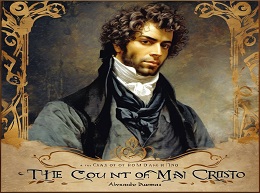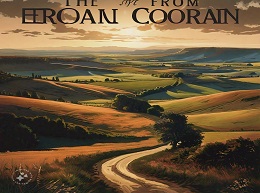The God of Small Things
In-Depth Review of Arundhati Roy’s The God of Small Things
Arundhati Roy’s The God of Small Things is a masterpiece of contemporary literature, weaving a poignant tale of love, loss, and the intricate web of social constraints in 1960s Kerala, India. Published in 1997, the novel won the Booker Prize and has since captivated readers with its lyrical prose and profound themes. Through the lens of a dysfunctional family, Roy delves into the harsh realities of societal norms, caste discrimination, and forbidden love. This review will explore the novel’s plot, characters, themes, and literary style, providing an in-depth analysis of why it remains a timeless and powerful work.
The Tragic Return
The novel opens with the return of Rahel to her childhood home in Ayemenem after years of living abroad. She is reunited with her twin brother, Estha, who has been living a life of silence and solitude. The narrative oscillates between the past and present, gradually revealing the events that led to their family’s downfall.
The Forbidden Love
At the heart of the story is the forbidden love affair between Ammu, the twins’ mother, and Velutha, a Dalit (Untouchable) carpenter. Their relationship defies the rigid caste system and societal norms, leading to tragic consequences. Ammu’s defiance of social expectations and her pursuit of love in the face of adversity form the emotional core of the novel.
The Tragedy Unfolds
The narrative builds towards a catastrophic event involving the death of Sophie Mol, the twins’ half-English cousin. Her death becomes a pivotal moment, unraveling the family's secrets and exposing the deep-seated prejudices and injustices that permeate their lives. The repercussions of this tragedy reverberate through the lives of the characters, leaving a lasting impact on the reader.
Love and Forbidden Relationships
One of the central themes of The God of Small Things is the exploration of love in its various forms, particularly forbidden love. Ammu and Velutha’s relationship challenges the deeply entrenched caste system and societal norms. Their love is portrayed as pure and genuine, yet it is deemed unacceptable by the rigid social hierarchy. The novel highlights the destructive power of societal constraints on personal relationships.
Caste and Social Discrimination
Roy’s novel offers a scathing critique of the caste system and social discrimination in India. Velutha’s status as a Dalit renders him an outcast, despite his skills and humanity. The novel vividly portrays the brutality and injustice faced by those at the bottom of the social hierarchy. The stark contrast between Velutha’s kindness and the cruelty he endures underscores the pervasive nature of caste-based oppression.
The Impact of Colonialism
The legacy of British colonialism is another significant theme in the novel. The characters grapple with their hybrid identities and the lingering effects of colonial rule. Sophie Mol’s mixed heritage symbolizes the cultural and racial tensions that continue to influence their lives. Roy deftly explores how colonialism has left an indelible mark on Indian society, shaping its values and conflicts.
Childhood and Innocence
Through the eyes of Rahel and Estha, the novel delves into the themes of childhood and innocence. The twins bond is a poignant depiction of sibling love and loyalty. Their innocence is shattered by the harsh realities of the adult world, and their experiences shape their identities and futures. The novel poignantly captures the loss of innocence and the enduring impact of childhood trauma.
Lyrical Prose
Arundhati Roy’s prose is marked by its lyrical and poetic quality. Her vivid descriptions and evocative language create a richly textured narrative. The novel’s sensory details bring the setting of Ayemenem to life, immersing the reader in its lush landscapes and vibrant culture. Roy’s use of metaphor and symbolism adds depth to the narrative, enhancing its emotional resonance.
Nonlinear Narrative
The novel’s nonlinear structure is a key element of its storytelling. The narrative shifts between different time periods, gradually revealing the events that shaped the characters lives. This fragmented approach mirrors the characters fragmented memories and emotions. The nonlinear narrative creates a sense of suspense and intrigue, drawing the reader into the intricate web of the story.
Symbolism
Roy employs a wealth of symbolism throughout the novel. The title itself, The God of Small Things, refers to the significance of small, seemingly insignificant details that shape the characters’ lives. The river, a recurring motif, symbolizes the flow of time and the inevitability of change. The imagery of decay and disintegration reflects the characters’ emotional and societal decay.
Ammu
Ammu is a complex and tragic character, embodying the struggles of women in a patriarchal society. Her defiance of societal norms and her pursuit of love make her a poignant figure. Despite her flaws and vulnerabilities, Ammu’s strength and resilience shine through. Her relationship with Velutha is a powerful testament to the transformative power of love.
Velutha
Velutha is portrayed as a gentle and skilled carpenter, whose status as a Dalit subjects him to relentless discrimination. His love for Ammu and his kindness towards the twins contrast sharply with the brutality he faces. Velutha’s character highlights the dehumanizing effects of the caste system and the potential for human connection to transcend societal barriers.
Rahel and Estha
The twins, Rahel and Estha, serve as the emotional anchors of the novel. Their close bond and shared experiences provide a lens through which the story unfolds. Rahel’s return to Ayemenem and her reflections on the past illustrate the enduring impact of childhood trauma. Estha’s silence and withdrawal symbolize the profound effect of their family’s tragedy.
Baby Kochamma
Baby Kochamma is a symbol of the oppressive forces within the family. Her adherence to social norms and her manipulative actions exacerbate the family’s suffering. Her character serves as a critique of the complicity of individuals in perpetuating oppressive systems.
The Death of Sophie Mol
Sophie Mol’s death is a pivotal moment in the novel, triggering a series of events that expose the underlying tensions and prejudices within the family. Her death serves as a catalyst for the unraveling of the family’s secrets and the exposure of societal injustices. The novel’s depiction of this tragedy highlights the fragility of innocence and the devastating impact of prejudice.
The River and the History House
The river and the History House are recurring motifs that symbolize the passage of time and the burden of history. The river represents the flow of time and the inevitability of change, while the History House embodies the weight of the past. These symbols enrich the narrative, providing a deeper understanding of the characters’ experiences and the novel’s themes.
The Forbidden Love Affair
Ammu and Velutha’s forbidden love affair is a central element of the novel, illustrating the destructive power of societal constraints. Their relationship challenges the rigid caste system and societal norms, highlighting the human cost of such discrimination. The novel’s portrayal of their love is both tender and tragic, underscoring the theme of love’s ability to transcend societal barriers.
The God of Small Things by Arundhati Roy is a poignant and powerful novel that delves into the complexities of love, loss, and social constraints. Through its vivid characters, lyrical prose, and rich symbolism, the novel offers a profound critique of societal norms and the impact of colonialism and caste discrimination. The narrative’s nonlinear structure and the exploration of childhood innocence add depth to the story, creating an immersive and emotionally resonant reading experience. Roy’s masterful storytelling and nuanced portrayal of human relationships make The God of Small Things a timeless work of literature that continues to captivate and inspire readers.













